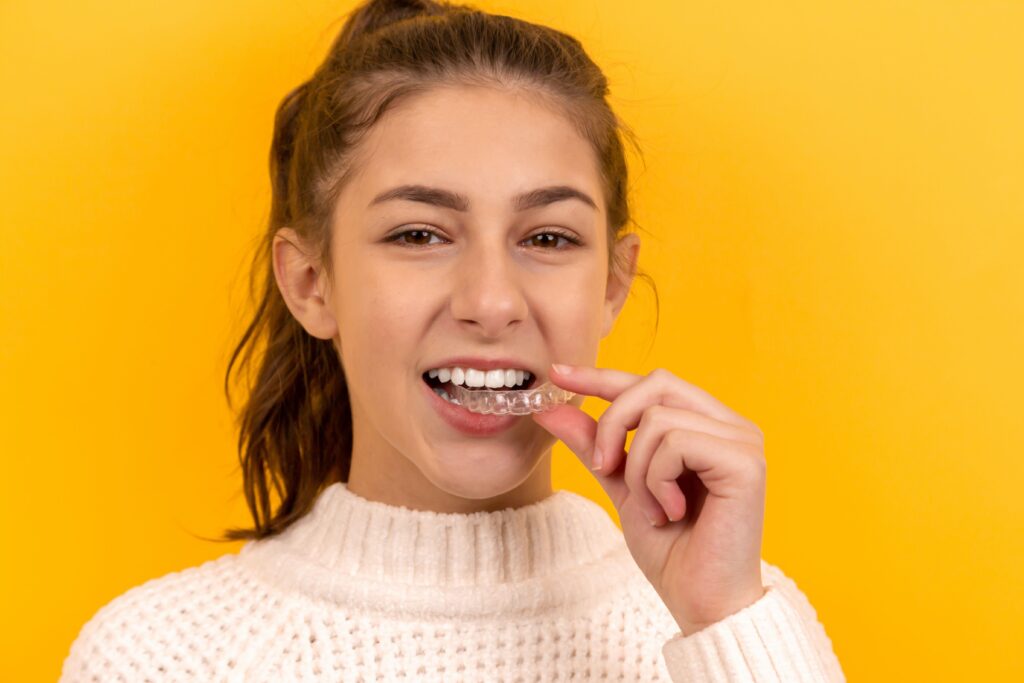Types of Retainers

Orthodontic retainers play a crucial role in maintaining the results of orthodontic treatment once braces are removed. These devices aid in stabilizing newly aligned teeth, facilitating their adjustment to the corrected position and ensuring a lasting improvement in your smile. Among the various types of retainers available, three main categories stand out: permanent retainers, Hawley retainers, and Essix retainers. Each type comes with its own set of advantages and disadvantages, catering to different preferences and needs.
Permanent Retainer
A permanent retainer consists of a thin wire affixed to the back of the teeth, offering a discreet and long-term solution. While its installation method resembles that of braces, its inconspicuous nature sets it apart.
Pros
One of the primary advantages of a permanent retainer is its discreetness. Since it is fixed to the back of the teeth, it remains virtually invisible to others.
Comfort is another key benefit. Permanent retainers are lightweight and less prone to trapping food particles, enhancing the overall user experience.
The cost-effectiveness of permanent retainers is noteworthy. Replacing them is relatively inexpensive compared to other types.
Cons
The need to wear a permanent retainer consistently requires extra attention to oral hygiene. Cleaning may necessitate a floss threader for thorough maintenance.
Hawley Retainer
Crafted from acrylic, the Hawley retainer is molded to fit the mouth and can be easily removed as recommended by the orthodontist.
Pros
Durability is a notable advantage of the Hawley retainer. It boasts a long lifespan and is simple to care for.
Customization options add a fun element, particularly for children and teenagers, as Hawley retainers come in various colors. The acrylic material is resistant to stains and scratches.
The ability to remove the Hawley retainer facilitates oral hygiene, allowing easy cleaning with a regular toothbrush and toothpaste.
Cons
A drawback is that dogs may see Hawley retainers as chew toys, potentially leading to damage.
Compared to a permanent retainer, the Hawley retainer is more visible and may cause initial discomfort, although it is not worn indefinitely.
Speech may be affected initially when wearing a Hawley retainer.
Essix Retainer
Also known as clear plastic retainers, Essix retainers are thin, transparent, and sit over the teeth.
Pros
Similar to Hawley retainers, Essix retainers can be removed, offering flexibility in wear.
The customized molding of Essix retainers to each tooth enhances their effectiveness in preventing tooth movement.
Their thin and clear design makes Essix retainers difficult to notice, providing a level of comfort.
Cons
Not suitable for everyone, Essix retainers may affect the bite due to the thin plastic material.
While more expensive than other types, Essix retainers are less durable.
Cleaning Essix retainers can be more challenging than Hawley retainers, as toothpaste may scratch the thin plastic.
Conclusion
Choosing the right type of retainer is a decision best made in consultation with your orthodontist, who can assess your individual needs and preferences. Whether you opt for the discreet permanence of a permanent retainer, the customizable and removable features of a Hawley retainer, or the inconspicuous comfort of an Essix retainer, each type has its own merits and considerations.
Your orthodontist will be able to explain which type of retainer is best for you. If you would like to learn more about the different types of retainers, get a free consultation today.
